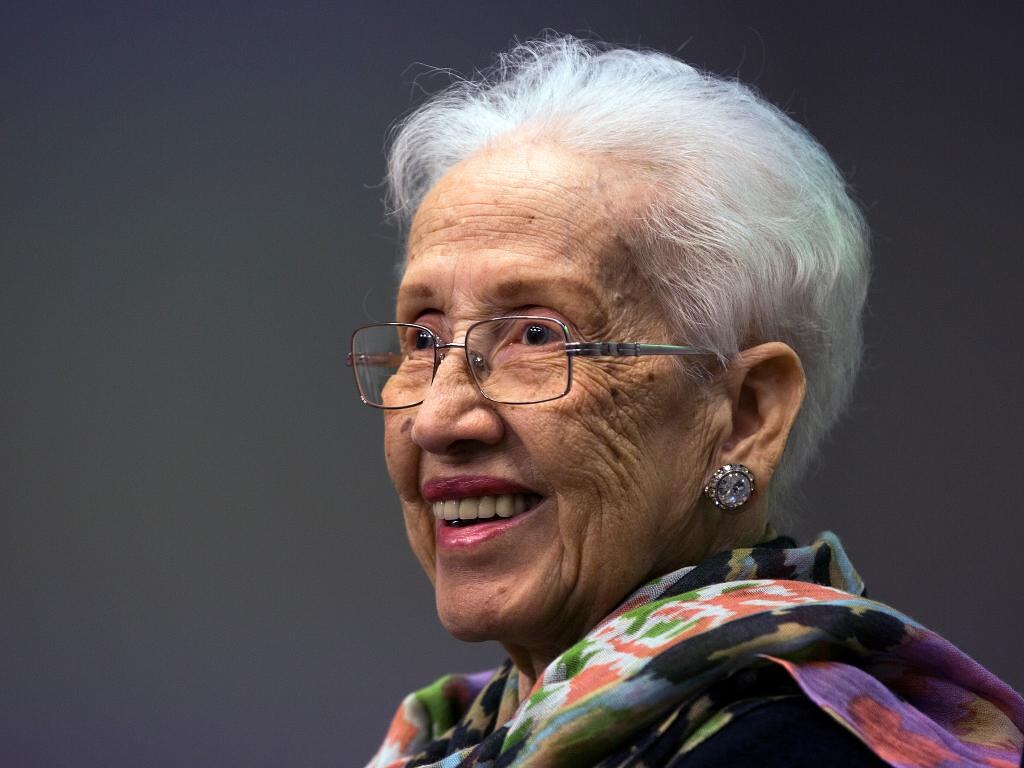A noted aerospace technologist and mathematician, Katherine Johnson died on February 24, 2020, at 101 years old. She stands out as an inspirational figure to African American women pursuing STEM careers. In this article, we look at her life’s work, and her vital contributions to the fields of mathematics, science, and technology.
Born Creola Katherine Coleman in Greenbrier County’s White Sulphur Springs in West Virginia, she was the youngest of four children. Her parents were Joshua Coleman, a farmer, lumberjack, and handyman, and Joylette Coleman, a teacher.
Johnson’s strong mathematical skills became apparent at an early age, and she finished the eighth grade at only 10 years old. However, public schooling was not offered in Greenbrier County for African American students beyond this level. The Colemans rented a home in Institute, West Virginia, where the children attended an African-American high school on the campus of West Virginia State College. The family divided their time between White Sulphur Springs and Institute, spending time at the former during the summer and at the latter throughout the school year.
An excellent student
After graduating from high school at the age of 14, Johnson enrolled at the historically black institution West Virginia State College (now West Virginia State University), where she signed up for every available math class. She received mentorship from multiple professors, including Dr. William W. Schieffelin Claytor, a seasoned mathematician who was the third African American to acquire a doctor of philosophy in mathematics. Another of Johnson’s professors was Angie Turner King, a mathematician and chemist who mentored her in high school.
In 1937, Johnson earned degrees in French and mathematics from West Virginia State College and graduated summa cum laudeat 18. Subsequently, she became a teacher at a public school for African American children in Marion, Virginia. She married her first husband and became Katherine Goble in 1939. Soon afterwards, Johnson left her teaching position and accepted an invitation to attend graduate school at West Virginia University after a 1938 landmark court case created new opportunities for African American students throughout the United States.
The ruling in Missouri ex rel. Gaines v Canada established that states offering higher public education to white students must also afford the same privileges to African American students. The court decision paved the way for the creation of black colleges and universities across the country and enabled learning institutions that had formerly only admitted white students to open their doors to African American students.
Johnson enrolled in West State University’s graduate math program and became the first female African American student to attend the university’s graduate school. She became pregnant one term into her studies and quit the math program in order to focus on her family. Her first husband, James Francis Goble, died from a brain tumor in 1956. Johnson was left with three daughters. In 1959, she married James A. Johnson, an US Army officer and Korean War veteran. He died in 2019.
Overcoming barriers
She chose to become a research mathematician despite the fact that it was challenging for women and people of African American descent to enter this field. In 1952, she discovered that the National Advisory Committee for Aeronautics (NACA) was seeking to recruit African American mathematicians for its all-African American West Area Computing section at the Langley Memorial Aeronautical Laboratory. The laboratory was part of NACA’s Guidance and Navigation Department, which employed white and African American mathematicians. Johnson accepted a position there in 1953.
Johnson initially worked alongside a team of women who completed math calculations. She often referred to herself and her cohorts as “computers who wore skirts.” Their primary role involved reading data from aircraft black boxes, as well as performing other complex mathematical tasks. Johnson later received a temporary assignment to assist the all-male flight research team, but it became a permanent position after her understanding of analytic geometry enabled her to form allegiances with male colleagues and superiors.
While Johnson acknowledged the gender and racial barriers, she disregarded them and focused on her role. She was assertive and requested involvement in editorial meetings, despite the fact that no women had previously been admitted. She maintained that because she put in the work, she belonged there. Johnson worked for NACA, the organization that became NASA, for more than 30 years.
A legacy celebrated by many
Johnson earned recognition for solving complex calculations during her time at NASA, as well as her contributions in pioneering the use of computers in advanced mathematics. NASA also acknowledged the historical significance of Johnson’s role as one of its first African American female scientists. In 2015, she received the Presidential Medal of Freedom from former President Barack Obama. Johnson was also awarded the Congressional Gold Medal in 2019.
Additionally, she was portrayed in the Oscar-nominated 2016 movie, Hidden Figures, which focused on the team of African American women whose mathematical skills and abilities enabled NASA to send astronaut John Glenn into space in 1962.
In an announcement of Johnson’s death via Twitter, NASA underlined her legacy of excellence and disrupting social and racial barriers. She is credited as a pioneer in STEM fields for women and African Americans. Additionally, former President Obama commended her refusal to allow societal expectations regarding gender and race to limit her as she expanded the reach of humanity.


 Joanna (Jo) Riley is an entrepreneur, investor, and advocate in technology, and is currently the CEO and Co-Founder of Censia. Jo has a highly experienced background in building and scaling companies, which she attributes to her deep passion for people and building technologies that allow people to be their best selves. She brings her wide knowledge of the industry to better transform the way enterprise companies hire talent. You can connect with Joanna Riley at @joannakiddriley on
Joanna (Jo) Riley is an entrepreneur, investor, and advocate in technology, and is currently the CEO and Co-Founder of Censia. Jo has a highly experienced background in building and scaling companies, which she attributes to her deep passion for people and building technologies that allow people to be their best selves. She brings her wide knowledge of the industry to better transform the way enterprise companies hire talent. You can connect with Joanna Riley at @joannakiddriley on